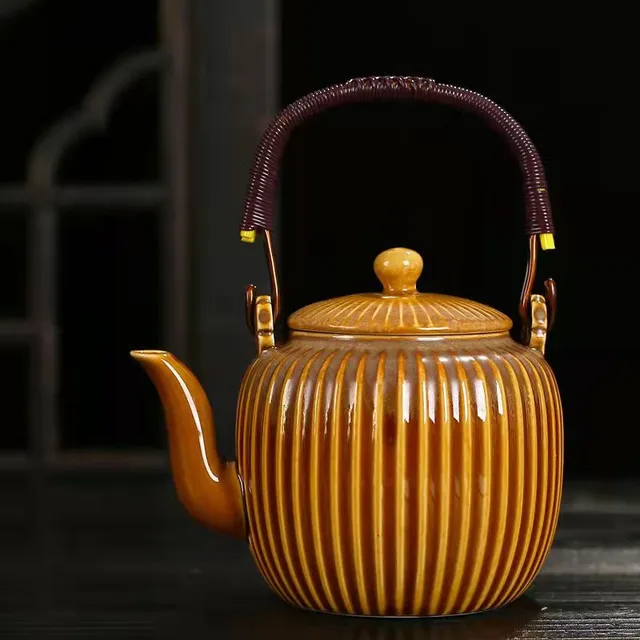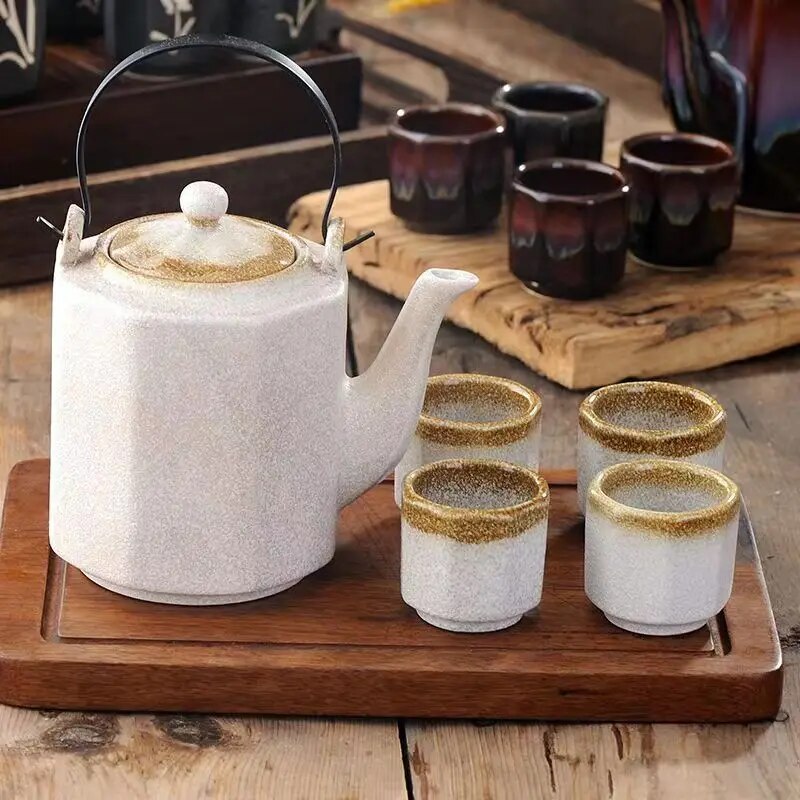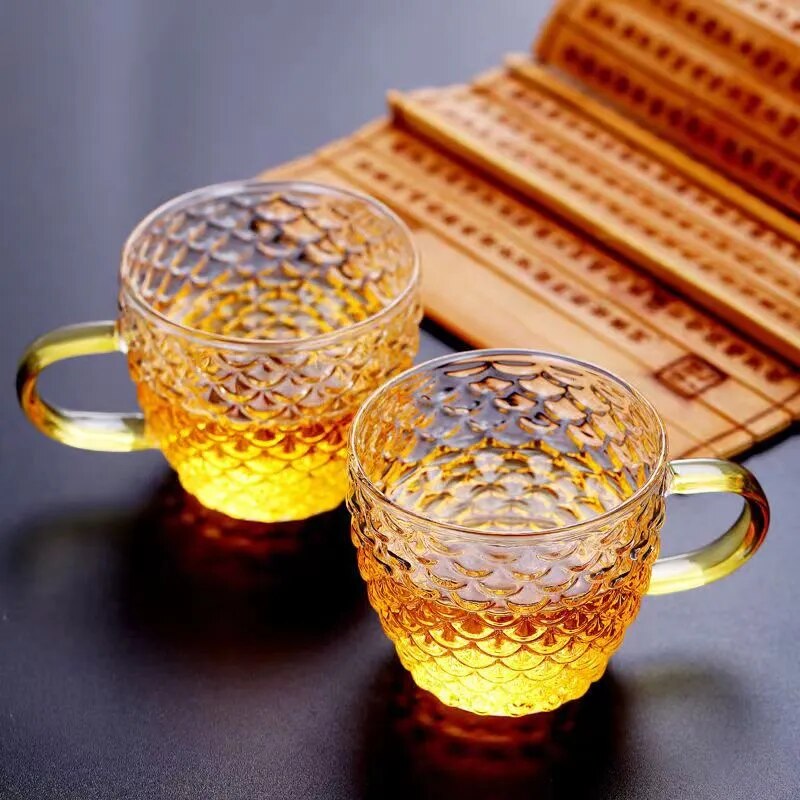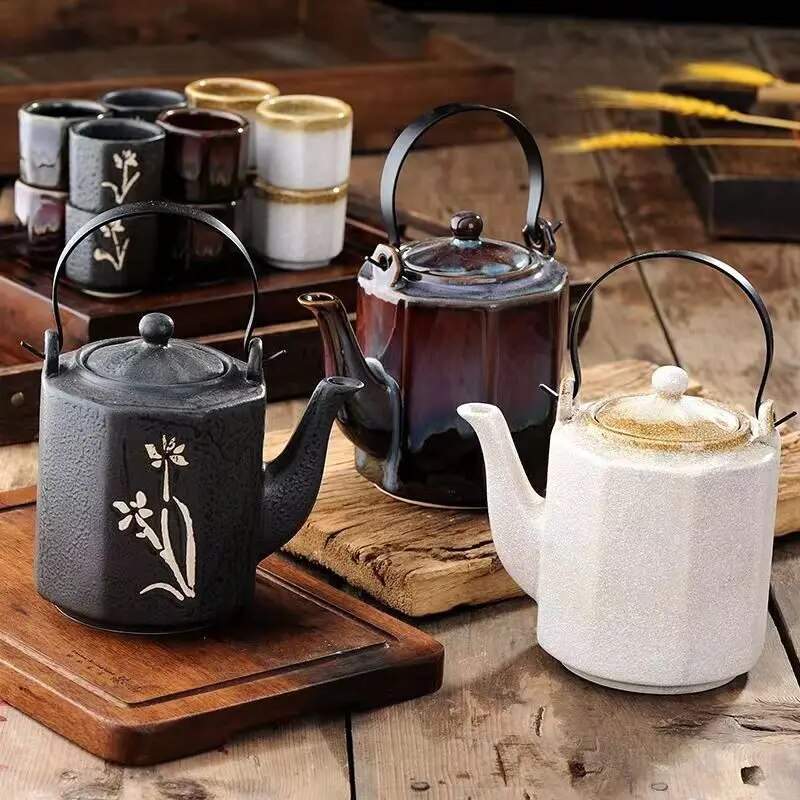
The humble teapot, a vessel seemingly straightforward in design, plays a pivotal role in the world of tea. Beyond its utilitarian function, it enhances the brewing process, influences the taste of your tea, and adds a touch of elegance to your tea-drinking ritual. Choosing the right one can be a nuanced endeavor, as it involves factors such as material, design, capacity, and more. In this comprehensive guide, we will explore the world of pots, providing you with the knowledge and insights needed to select the perfect one for your tea-loving journey.
The Significance of Choosing the Right Teapot
Before we delve into the finer details of selecting a pot, it’s essential to understand why the choice matters:
1. Brewing Performance: The design and material of the teapot can significantly affect the brewing process. A well-chosen ensures optimal steeping, releasing the full flavor and aroma of your tea leaves.
2. Aesthetic Appeal: These come in a myriad of shapes, colors, and designs, making them an artistic addition to your tea experience. It can reflect your personal style and enhance your tea-drinking ambiance.
3. Versatility: Different teas require different brewing conditions. The right teapot can cater to a variety of teas, from delicate greens to robust blacks, without compromising flavor.
4. Connection to Tradition: This is a symbol of tradition and culture in many parts of the world. Choosing the right can connect you to the rich history and rituals associated with tea.
Now, let’s explore the factors to consider when selecting the perfect teapot.
Factors to Consider When Choosing a Teapot
1. Material
Teapots are crafted from a variety of materials, each with its own unique properties that can influence your tea’s flavor and brewing experience. Here are some common materials and their characteristics:
- Porcelain: Porcelain are classic and elegant. They are non-porous, making them suitable for delicate teas like white or green tea. Porcelain retains heat well but can be fragile.
- Ceramic: Ceramic teapots come in various styles and are versatile for different types of tea. They are sturdy, retain heat effectively, and are less fragile than porcelain.
- Glass: Glass offer transparency, allowing you to watch the tea leaves unfurl and infuse. They are ideal for blooming teas and herbal blends. However, glass doesn’t retain heat as well as other materials.
- Cast Iron: Cast iron teapots are known for their excellent heat retention and durability. They are often used for brewing strong, bold teas like black or oolong. They require seasoning to maintain their integrity.
- Yixing Clay: Yixing clay , made from purple clay in China, are revered for their ability to absorb tea flavors over time. They are ideal for single-type teas and require dedicated use to develop their unique character.
- Stainless Steel: Stainless steel teapots are durable and do not retain flavors from previous brews. They are suitable for various teas and are easy to clean.
The choice of material depends on your tea preferences and desired aesthetics. For a well-rounded collection, consider having pots made from different materials to suit various tea types.
2. Capacity
Teapot capacity determines how much tea you can brew at once. The ideal capacity depends on whether you typically drink tea alone or with company. Here are some general guidelines:
- Small (1-2 cups): Suitable for solo tea drinkers or those who enjoy multiple infusions of different teas in one sitting.
- Medium (3-4 cups): Ideal for couples or small gatherings. Provides enough tea for a few servings without constant refilling.
- Large (5+ cups): Perfect for larger gatherings or when serving tea to a group. Great for hosting tea parties or family gatherings.
Choose a teapot size that aligns with your daily tea-drinking habits and social preferences.
3. Design and Style
Teapots come in a wide array of designs, from traditional to modern, and may feature various decorative elements. Consider the following aspects when choosing a design:
- Aesthetic Appeal: It should resonate with your personal style and the ambiance you want to create. Traditional designs often have cultural and historical significance, while contemporary designs offer a modern touch.
- Spout and Handle: Evaluate the ergonomics of the teapot’s spout and handle. A well-designed spout ensures a smooth pour, while a comfortable handle allows for easy grip and pouring.
- Lid and Infuser: Look for pots with snug-fitting lids to trap heat and prevent spills. Removable infusers make it easy to steep loose tea leaves and remove them when the desired strength is achieved.
- Artistic Elements: Some feature hand-painted or artisanal details that add a touch of artistry to your tea experience. These can serve as both functional and decorative pieces.
4. Heat Retention
The ability of a teapot to retain heat can affect the quality of your tea. Materials like cast iron and ceramic are excellent heat retainers, while glass and porcelain may lose heat more quickly. If you prefer your tea to stay hot for an extended period, choose one with good heat retention properties.
5. Tea Type Compatibility
Certain teas, such as green, white, and oolong, are more delicate and require lower water temperatures and shorter steeping times. Other teas, like black and herbal, benefit from higher temperatures and longer infusions. Ensure that your chosen is suitable for the types of tea you regularly enjoy.
6. Price and Budget
Teapots come in a wide price range, from affordable to luxury options. Set a budget that aligns with your preferences and needs. Keep in mind that while high-end may offer exquisite craftsmanship and materials, there are plenty of quality available at lower price points.
How to Care for Your Teapot
Once you’ve found the perfect one, it’s essential to maintain it to ensure its longevity and continued performance:
- Cleaning: Hand wash your teapot with warm water and mild detergent after each use. Avoid using abrasive materials that could scratch the surface.
- Staining: Over time, these made of porous materials like Yixing clay may develop a patina from absorbed tea flavors. Embrace this as part of the teapot’s character, as it can enhance the taste of future brews.
- Drying: After washing, thoroughly dry it to prevent mold or mildew growth. Leave the lid and infuser separate to allow air circulation.
- Storage: Store your teapot in a cool, dry place to prevent damage. Avoid stacking other items on top of it, which could lead to breakage.
In Conclusion
Choosing the right teapot is an art in itself, blending aesthetics, functionality, and personal preference. The perfect one enhances your tea-drinking experience, ensuring you savor every sip of your favorite brew. Consider the material, capacity, design, heat retention, tea compatibility, and budget when selecting. Whether you’re a tea connoisseur or a casual drinker, the right one can transform your tea ritual into an exquisite journey of taste and aesthetics, connecting you to the world of tea in a meaningful way.




